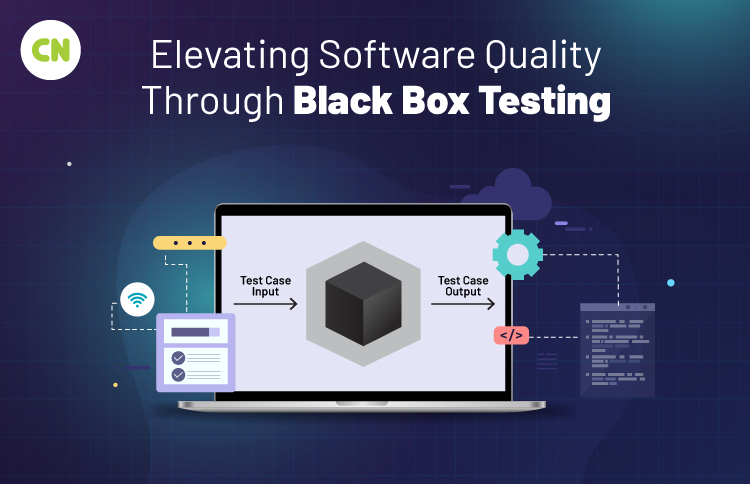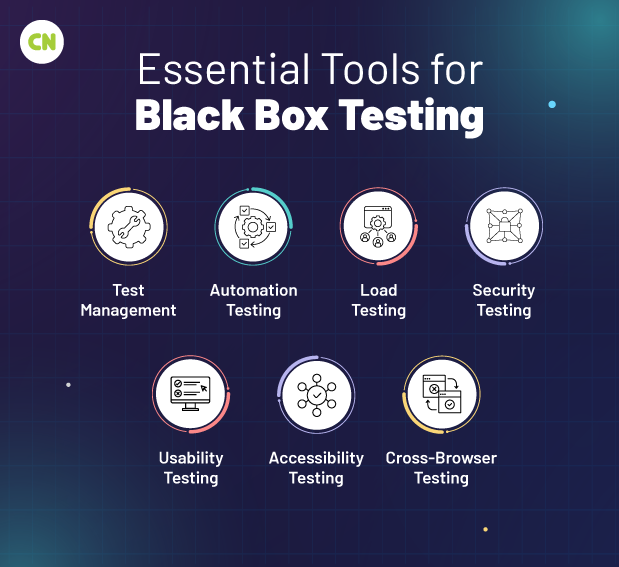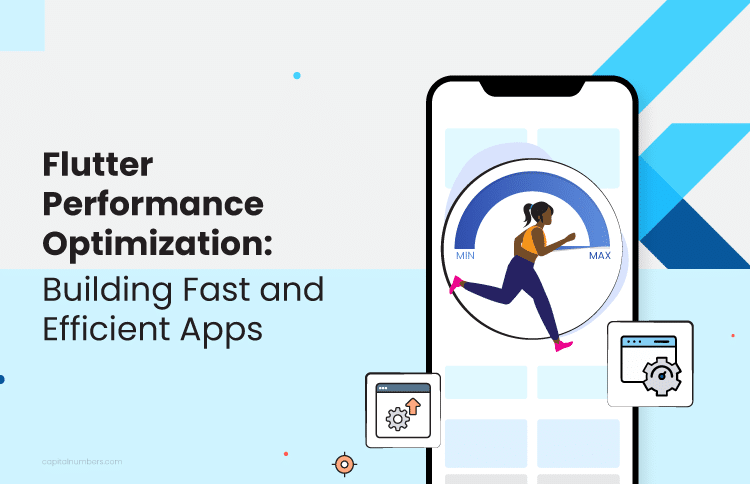Elevating Software Quality Through Black Box Testing
Table of Contents
In the world of software development, ensuring quality is essential. Users demand software that performs well, and with numerous options available, meeting these expectations is crucial. That’s where software testing and quality assurance services come in. They act as a thorough check-up for your software, ensuring it runs smoothly without needing to understand all the technical details.
In this blog, we’ll discuss how software testing and quality assurance services, particularly black box testing, can help improve the quality of your software. So, get ready to learn how this technique can make a significant difference in your development process.
Understanding Software Development and Quality Assurance
Software development is like building a house: it’s a step-by-step process where you start with a plan, create the structure, and then refine it until it’s perfect. But just like a house needs inspections to ensure it’s safe and well-built, software needs quality assurance (QA) to guarantee it works correctly.
When it comes to custom software development—creating unique solutions tailored to specific needs—the challenges multiply. Unlike off-the-shelf software, custom solutions have to fit like a glove, which means they need even more attention to quality.
Software development companies are the architects and builders of the digital world. Their job is to turn ideas into reality, crafting software that not only meets but exceeds clients’ expectations. And at the heart of this process lies QA, ensuring that every line of code contributes to a flawless end product.
Exploring Software Testing Techniques
In the expansive domain of software development, various testing methodologies serve as the gatekeepers of quality, ensuring that the final product meets the highest standards. Let’s explore some of these techniques:
Overview of Different Software Testing Methodologies:
- Unit Testing: This involves testing individual components or units of code in isolation, typically at the function or method level.
- Integration Testing: Here, the focus shifts to testing how different units/modules of code work together as a cohesive unit.
- System Testing: This involves testing the entire software system as a whole to ensure that it meets all specified requirements.
- Acceptance Testing: The software is tested to ensure it meets the acceptance criteria set by the stakeholders or end-users.
Black Box Testing: Concept and Methodology
What is Black Box Testing?
Black box testing is a software testing method that evaluates the functionality of a software application without examining its internal code structure. In essence, it treats the software as a “black box,” where testers are only concerned with its inputs, outputs, and behavior.
How Does it Work?
Imagine you have a software application, but you have no idea how it’s programmed inside. With black box testing, testers interact with the software just like any user would. They input data, click buttons, and navigate through the interface to observe how the software responds. The goal is to identify any discrepancies between the expected behavior and the actual behavior of the software.
Illustration of Black Box Testing Methodology:
Let’s say you’re testing a calculator application. You don’t need to know how the calculator performs its calculations internally. Instead, you input various numbers and mathematical operations (e.g., addition, subtraction) and verify that the results displayed by the calculator match the expected outcomes.
Focus on Functionality:
Unlike white box testing, which involves analyzing the internal code and logic of the software, black box testing focuses solely on its functionality from the outside. Testers don’t need access to the source code or knowledge of its implementation details. Instead, they assess how well the software performs its intended tasks and whether it meets specified requirements.
Importance of Effective Test Cases:
Creating effective test cases and scenarios is crucial for successful black box testing. Testers need to design test inputs that cover a wide range of possible interactions with the software. This includes both valid inputs (those that should produce correct results) and invalid inputs (those that should trigger error messages or unexpected behavior). By systematically testing various scenarios, testers can uncover defects and ensure that the software functions reliably under different conditions.
Types of Black Box Testing
Black box testing comes in various flavors, each serving a specific purpose in ensuring software quality. Here are some key types:
1 Functional Testing:
Functional testing focuses on verifying that the software performs its intended functions correctly. Testers examine the software’s features, inputs, outputs, and user interactions to ensure they align with the specified requirements. This type of testing validates whether the software meets the functional expectations outlined in the design and requirements documents. Examples include testing individual features, user workflows, and system integrations to ensure seamless functionality.
2 Regression Testing:
Regression testing ensures that recent code changes or modifications haven’t adversely affected existing functionality. Testers re-run previously executed test cases to verify that the software still behaves as expected after updates or enhancements. This type of testing helps detect and prevent regression defects, ensuring that the software remains stable and reliable throughout the development lifecycle. Examples include re-testing critical functionalities, edge cases, and integrations to validate their continued functionality post-update.
3 Nonfunctional Testing:
Nonfunctional testing evaluates aspects of the software beyond its core functionality, such as performance, reliability, usability, and security. Testers assess how well the software performs under various conditions and environments to ensure it meets nonfunctional requirements and user expectations. This type of testing focuses on attributes that are critical to the overall user experience and the software’s success in the real world. Examples include load testing to assess system performance under heavy traffic, usability testing to evaluate the software’s user interface, and security testing to identify vulnerabilities and weaknesses in the software’s defenses.
Advantages of Black Box Testing in Software Quality Assurance
1 Examination of Specific Benefits:
Black box testing offers several distinct advantages in ensuring software quality. One key benefit is its ability to provide an unbiased assessment of the software’s functionality, focusing solely on user interactions and outputs without being influenced by internal code structures or implementation details.
2 Improved Detection of Bugs and Errors:
Black box testing is particularly effective in uncovering bugs and errors that might be missed by other testing methods. Since testers approach the software from an end-user perspective, they are more likely to identify issues related to usability, performance, or compatibility that could impact the overall quality of the software.
3 Enhancement of User Experience:
By validating software functionality from an end-user perspective, black box testing contributes to enhancing the overall user experience. Testers simulate real-world usage scenarios, ensuring that the software meets user expectations in terms of ease of use, responsiveness, and intuitiveness. This focus on user-centric testing helps organizations deliver products that are not only functional but also user-friendly and engaging.
4 Cost-Effectiveness in Defect Identification:
Another advantage of black box testing is its cost-effectiveness in identifying defects early in the development process. By detecting issues related to functionality or usability during the testing phase, software development companies can address them proactively, saving time and resources that would otherwise be spent on fixing bugs after the software has been released to users. This early defect identification also minimizes the risk of potential negative impacts on the organization’s reputation or financial standing.
Disadvantages of Black Box Testing
While black box testing offers numerous benefits, it also has some limitations and challenges that developers should be aware of:
1 Limited Code Coverage:
Black box testing focuses solely on the external behavior of the software, which means it may not uncover defects or vulnerabilities lurking within the codebase. Without visibility into the internal structure of the software, testers may miss certain paths or scenarios that could lead to errors.
2 Inefficient Bug Localization:
When black box testing uncovers a bug or defect, it can be challenging to pinpoint the exact cause within the codebase. Testers may struggle to provide detailed information to developers, leading to longer resolution times and increased frustration.
3 Dependency on Test Cases:
Black box testing relies heavily on predefined test cases and scenarios. While this ensures thorough coverage of the software’s functionality, it can also be time-consuming to create and maintain a comprehensive set of test cases, especially for complex systems with numerous features.
4 Difficulty in Reproducing Issues:
Because black box testing focuses on the software’s external behavior, reproducing issues encountered during testing may be challenging. Testers may struggle to recreate the exact conditions that led to a particular bug or error, making it harder to diagnose and fix the problem.
5 Limited Control Over Testing Environment:
Testers conducting black box testing have limited control over the testing environment, including inputs, data, and system configurations. This can make it difficult to simulate real-world scenarios or edge cases, potentially leading to gaps in test coverage.
6 Not Suitable for Complex Algorithms:
Black box testing may not be effective for testing software with complex algorithms or intricate logic. Since testers have no visibility into the internal workings of the software, they may struggle to validate the correctness of algorithmic implementations or optimize performance.
Integrating Black Box Testing into Software Development Processes
1 Strategies for Incorporating Black Box Testing:
Integrating black box testing into the software development lifecycle requires careful planning and execution. One effective strategy is to establish dedicated testing phases within the development process, where black box testing activities are conducted systematically at key milestones. This ensures that testing efforts are aligned with development timelines and allows for early detection and resolution of issues.
2 Collaboration Between Developers, QA Engineers, and Stakeholders:
Effective collaboration between developers, QA engineers, and stakeholders is essential for ensuring the success of black box testing. Developers can provide insights into the software’s design and functionality, helping QA engineers design comprehensive test cases and scenarios. Regular communication and feedback loops ensure that testing efforts are focused on addressing critical areas of concern and meeting the expectations of stakeholders.
3 Automation of Black Box Testing:
Automation of black box testing can significantly streamline the testing process and increase efficiency. Test automation tools can be used to create and execute test scripts, allowing for repetitive test cases to be automated and executed quickly. This frees up QA engineers to focus on more complex testing scenarios and ensures consistent and reliable test results across multiple iterations of the software.
4 Continuous Improvement and Iteration:
Black box testing is not a one-time activity but rather an ongoing process that should be integrated into the software development lifecycle. Continuous improvement and iteration based on feedback from black box testing results are crucial for optimizing the testing process and enhancing software quality over time. This involves analyzing test results, identifying areas for improvement, and implementing corrective actions to address any issues or deficiencies uncovered during testing.
You May Also Read: The Future of Software Testing: 10 Innovations to Follow.
Essential Tools for Black Box Testing
Black box testing relies on a variety of tools to streamline the testing process, enhance efficiency, and ensure thorough test coverage. Here are some commonly used tools in black box testing:
1 Test Management Tools:
These tools help testers organize, manage, and execute test cases efficiently. They provide features such as test case creation, assignment, scheduling, execution tracking, and reporting. Examples include TestRail, Zephyr, and QTest.
2 Automation Testing Tools:
Automation tools enable testers to automate repetitive test cases, reducing manual effort and speeding up the testing process. They support scripting or recording of test scenarios, execution of tests across different environments, and generation of test reports. Popular automation tools include Selenium WebDriver, Katalon Studio, and HP Unified Functional Testing (UFT).
3 Load Testing Tools:
Load testing tools simulate real-world user traffic and behavior to assess the performance and scalability of software applications. They generate virtual users, simulate user interactions, and measure system response times under various load conditions. Examples include Apache JMeter, LoadRunner, and Gatling.
4 Security Testing Tools:
Security testing tools identify vulnerabilities and weaknesses in software applications to ensure they are resistant to malicious attacks and breaches. These tools scan for security flaws such as SQL injection, cross-site scripting (XSS), and broken authentication. Examples include OWASP ZAP, Burp Suite, and Acunetix.
5 Usability Testing Tools:
Usability testing tools evaluate the user-friendliness and accessibility of software interfaces to ensure a positive user experience. They collect feedback from real users, measure task completion times, and identify areas for improvement in the user interface (UI) and user experience (UX). Examples include UserTesting, Optimal Workshop, and UsabilityHub.
6 Accessibility Testing Tools:
Accessibility testing tools assess the accessibility of software applications for users with disabilities, ensuring compliance with accessibility standards such as WCAG (Web Content Accessibility Guidelines). These tools check for accessibility issues such as screen reader compatibility, keyboard navigation, and color contrast. Examples include Axe, Wave Accessibility Tool, and AChecker.
7 Cross-Browser Testing Tools:
Cross-browser testing tools verify that software applications function correctly across different web browsers and browser versions. They automate the execution of test scripts on multiple browsers and platforms to identify compatibility issues and ensure consistent behavior. Examples include BrowserStack, CrossBrowserTesting, and Sauce Labs.
By leveraging these tools effectively, testers can enhance the efficiency and effectiveness of black box testing, ensuring thorough validation of software functionality, performance, security, and usability.
Conclusion
In closing, remember that software quality is crucial in today’s competitive market. Black box testing is a key player in ensuring that quality. It helps us find bugs, improve user experience, and make sure our software is reliable.
So, to all software development companies out there, don’t overlook black box testing—it’s a game-changer for your quality assurance process. Embrace it, integrate it into your workflow, and watch your software shine. And if you need a hand, remember that experts in Software Testing & Quality Assurance Services are here to help you along the way. Feel free to contact us for assistance.















